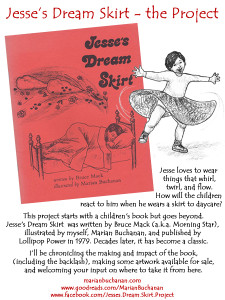In the previous post about the children’s book Jesse’s Dream Skirt, we looked at the way the daycare teacher was portrayed. Since the character’s name is Bruce just like the author, it’s fair to wonder if they’re one and the same. So I said the next post (this one) would be about Bruce the author.
At the time, I thought I was on the verge of discovering all there was to know about him, because I’d just located him in a Mack family tree on a genealogy site and had messaged both his brothers, Kevin and Barry. But here we are, many months later, with still no reply from either one. It’s possible they don’t visit the genealogy site often enough to have seen my messages. Try as I might, I haven’t been able to find any other way to contact them, and it’s possible no reply will ever come, so I don’t want to postpone this any longer. Here, then, is what I’ve discovered so far about Bruce Mack, author of Jesse’s Dream Skirt. (Correction December 2019: the brothers have now connected with me! I’ve made some corrections to the post based on new information from them, and will create an additional biographical post once there is more to share.)
Bruce Robert Mack was born on May 3rd, 1952, to John and Louise Mack (nee Louise Henrietta Abel). His place of birth was New Haven, Connecticut (USA) but he spent his school-age years in the Oswego, New York area, where he was frequently on the school’s honor roll and participated in school races.(1)
After graduating from high school in 1970 (Phoenix Central School, NY), he attended Mohawk Valley Community College and SUNY’s Harpur College in Binghamton.
He served in the Vietnam War = erroneous information obtained from his obituary in the Syracuse Herald Journal. Correction received (December 2019) from brothers Kevin and Barry: All three brothers were vehemently opposed to the Vietnam war and none of them served in it.
In the 1970s, after living for a time in Greenwich Village, he moved to the San Francisco bay area. This is where he lived when his story Jesse’s Dream Skirt was published under the pen name Morning Star in the “socialist journal of gay liberation” Magnus. It included the following byline:
Morning Star lives in S.F. and is interested in forming a collective to write anti-sexist, pro-feminist children’s stories.
Although he wasn’t one of the founders of the Lollipop Power collective, that’s exactly what kind of mandate it had. So it’s no surprise that they ended up discovering each other and put out an edited version of the story in book form, which is the one I illustrated.
The book version’s dedication reveals a little something about the author as well:
For my mother Louise, the source from which so much of this flows, and with a special thought for all persons who feel out of place.
morningstar
It warms my heart to gather from the above that his mother was supportive of him and, presumably, of the story.
But still, we want to know more, from people who knew him, not just clues in publication texts. I was able to correspond briefly with Larry Hermsen, the illustrator of the magazine version of the story, who described Bruce Mack as follows:
“Bruce was sort of an elusive figure. I didn’t know him well, but we were part of a large circle of gay men who were active around politics and gender roles. He was androgynous, almost too sweet, very soft spoken and a bit ephemeral.”
In response to my request for help getting in touch with anyone else who might have known Bruce, Larry wrote:
“Bruce and I are of the generation that were most affected by AIDS, esp. in San Francisco, and most of the people who would know about Bruce are gone.”
Larry believed Bruce himself had died of AIDS some years ago as well. I was able to track down Bruce’s obituary in the Syracuse Herald Journal of April 3rd, 1994. It confirmed that Bruce Mack, of Pacifica CA, had died on March 16th of that year, of complications from AIDS. He was 41 at the time. The obituary mentioned his authorship of Jesse’s Dream Skirt and his occupation as a nurse.
I wish I knew whether or not he’d also been a daycare teacher at any time. The way the magazine version of the story is written makes me think it’s possible it came from a real life incident, especially with the teacher in the story being named Bruce.
I also wish I had photos to share with you, something to put a face to the name, beyond Larry’s verbal description of Bruce’s demeanor.
And I wish I knew what the story meant to Bruce. Did he imagine Jesse as gay? trans? or what some people nowadays call a “pink boy”? Or, as might be indicated by the dedication, did he, without any need to pigeonhole the little boy in the story, consider him to be simply one of the many “persons who feel out of place”? I wonder how Bruce would have reacted to the way the story has become such a classic in the LGBTQI and anti-bullying education circles and such a focus of hatred and fear-mongering in some anti-gay circles. (I’ll be talking about those aspects of its impact in future posts.)
We may never know— Thanks to Bruce’s brothers, we are about to know more than this about the author Bruce Mack, a.k.a. Morningstar. (I’ll write a new biographical post once I’ve gatherd more material from Kevin and Barry.) But if anyone else who knew him ever reads this (relatives, friends, acquaintances…), I hope they’ll get in touch to help fill the gaps and tell us more about the gentle soul who had such an impact on those who read his story, Jesse’s Dream Skirt.
***
This year (2019), for the 40th anniversary of the book version of Jesse’s Dream Skirt, I’ll be publishing a —coloring book edition of all my illustrations from the book— reprint of the whole book, thanks to permission from Bruce’s brothers who have now made contact! If you’d like to be notified when it becomes available, please join my mailing list (check the Jesse’s Dream Skirt Project checkbox and any other newsletters you may be interested in).
(1) Appendix: a glimpse into Bruce’s school years as covered by the Oswego Palladium Times:
During the 1960s, Bruce Mack and his brother Barry are frequently named in the school honor roll lists published by the Oswego Palladium Times.
1965: Bruce is mentioned as a member of the Alexander Phoenix Chapter of Yorkers, which group made a visit to the Erie Canal Museum in Syracuse.
1968: Bruce is mentioned as a member of the Phoenix Central Cross Country team that participated in the Fulton Invitational varsity race.
1969: Bruce is mentioned as a member of the team that won the sprint medley relay, and his brother Barry is mentioned as having won the long jump and triple jump as well as being on the winning team for the 880 yard relay.
1970: Bruce is mentioned as about to attend Mohawk Valley Community College after graduation from Phoenix Central.
1971: Bruce is listed as being on the Dean’s List for academic achievement during the Spring quarter at Mohawk Valley Community College, with his residence mentioned as Pleasant Lake, Pennellville.
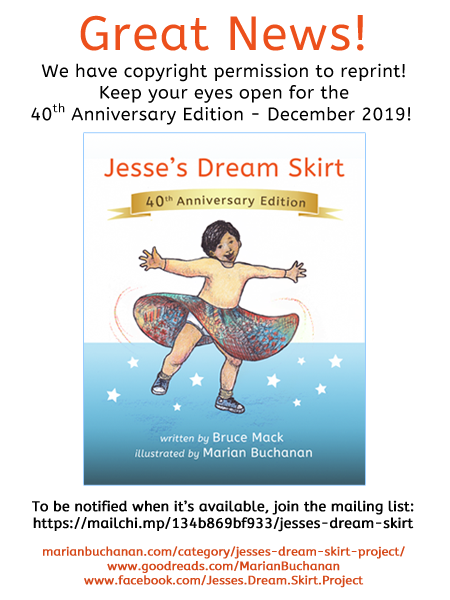
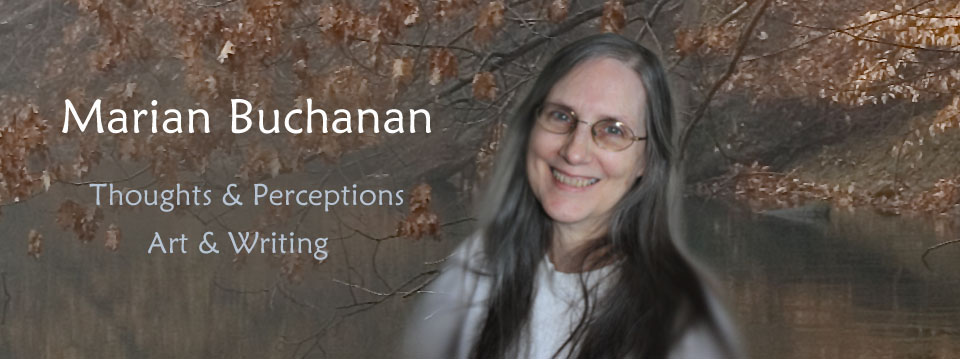
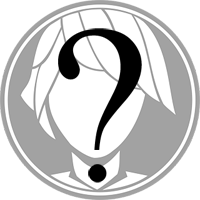
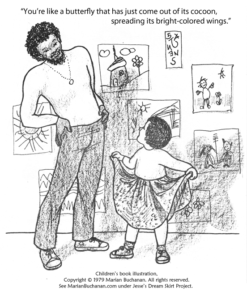 When Jesse walks into the daycare center, the teacher sees the little boy’s skirt, smiles, and says, “Well, look at you.” In the initial (magazine) version, he then says, “How unusual,” and Jesse “look[s] up wondering” and asks, “What does that mean?” In the book version, there’s no comment about it being unusual, and when Jesse looks up and responds, it’s to ask, “Do you like it?” After a pause, the teacher begins his reply with a “Yes.”
When Jesse walks into the daycare center, the teacher sees the little boy’s skirt, smiles, and says, “Well, look at you.” In the initial (magazine) version, he then says, “How unusual,” and Jesse “look[s] up wondering” and asks, “What does that mean?” In the book version, there’s no comment about it being unusual, and when Jesse looks up and responds, it’s to ask, “Do you like it?” After a pause, the teacher begins his reply with a “Yes.”
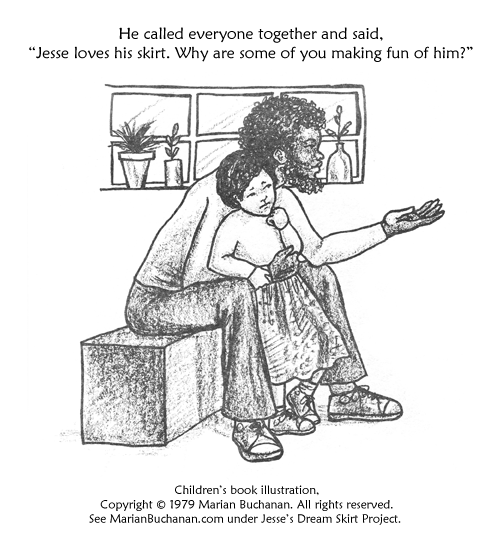
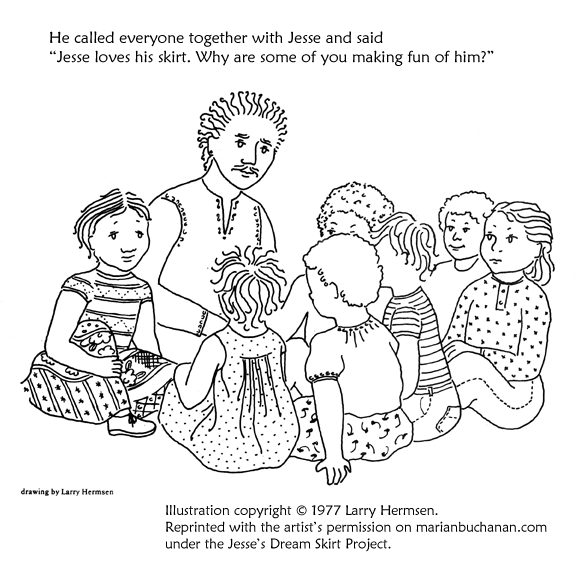
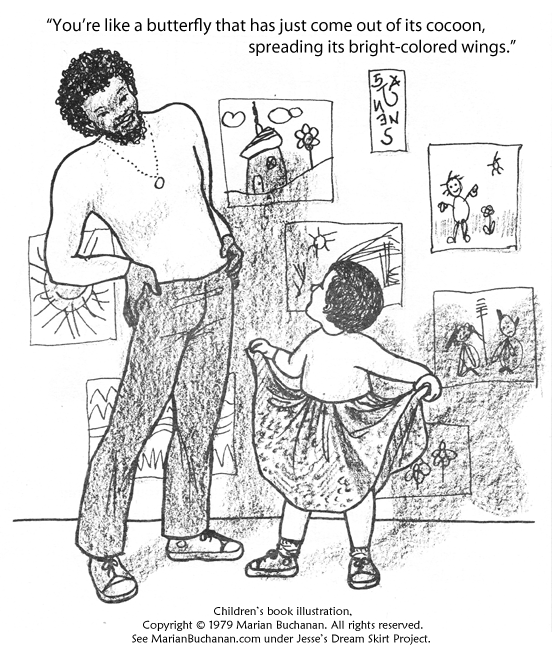
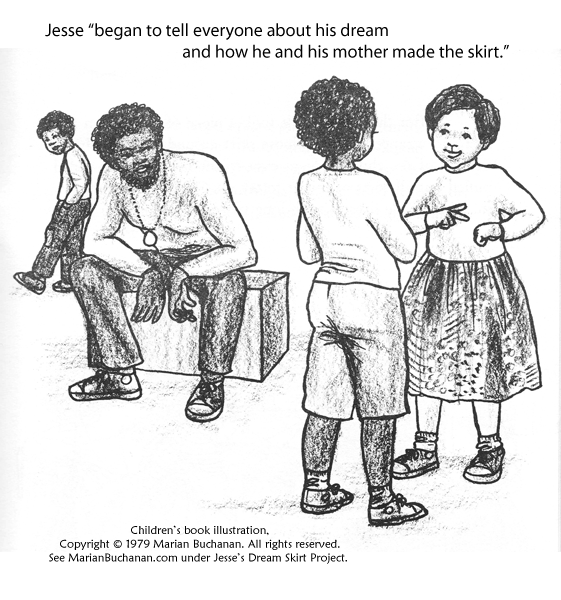
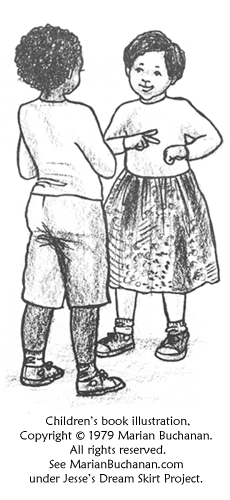 This is a continuation of the exploration of the differences between the
This is a continuation of the exploration of the differences between the 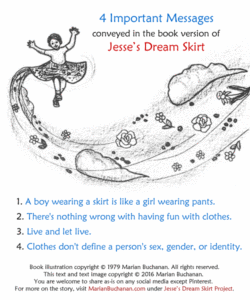
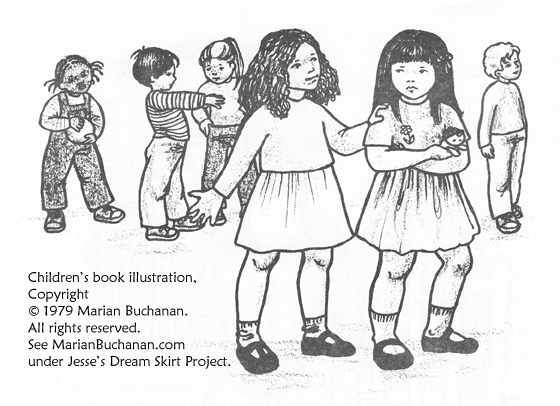
 In the children’s story
In the children’s story 
